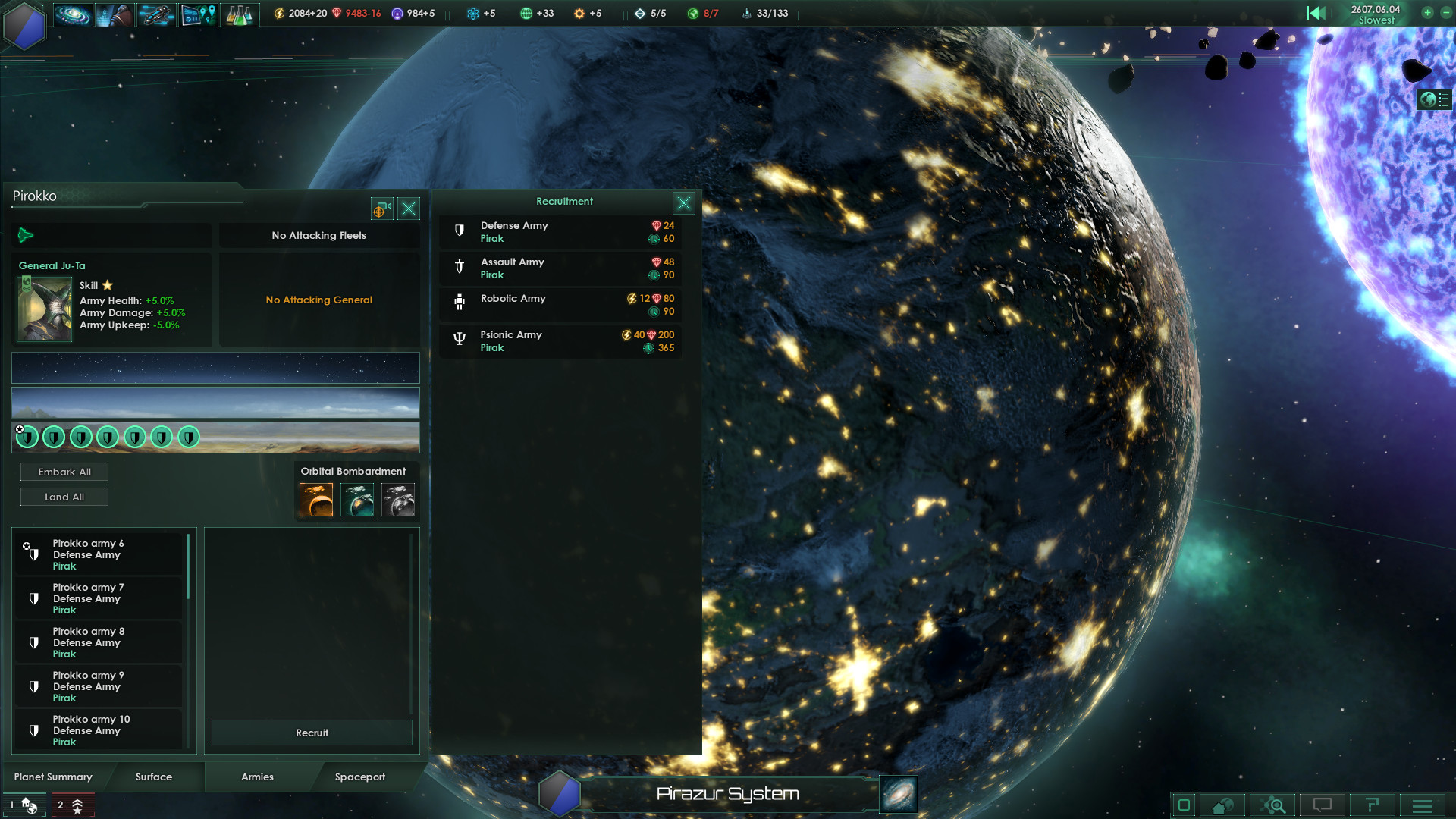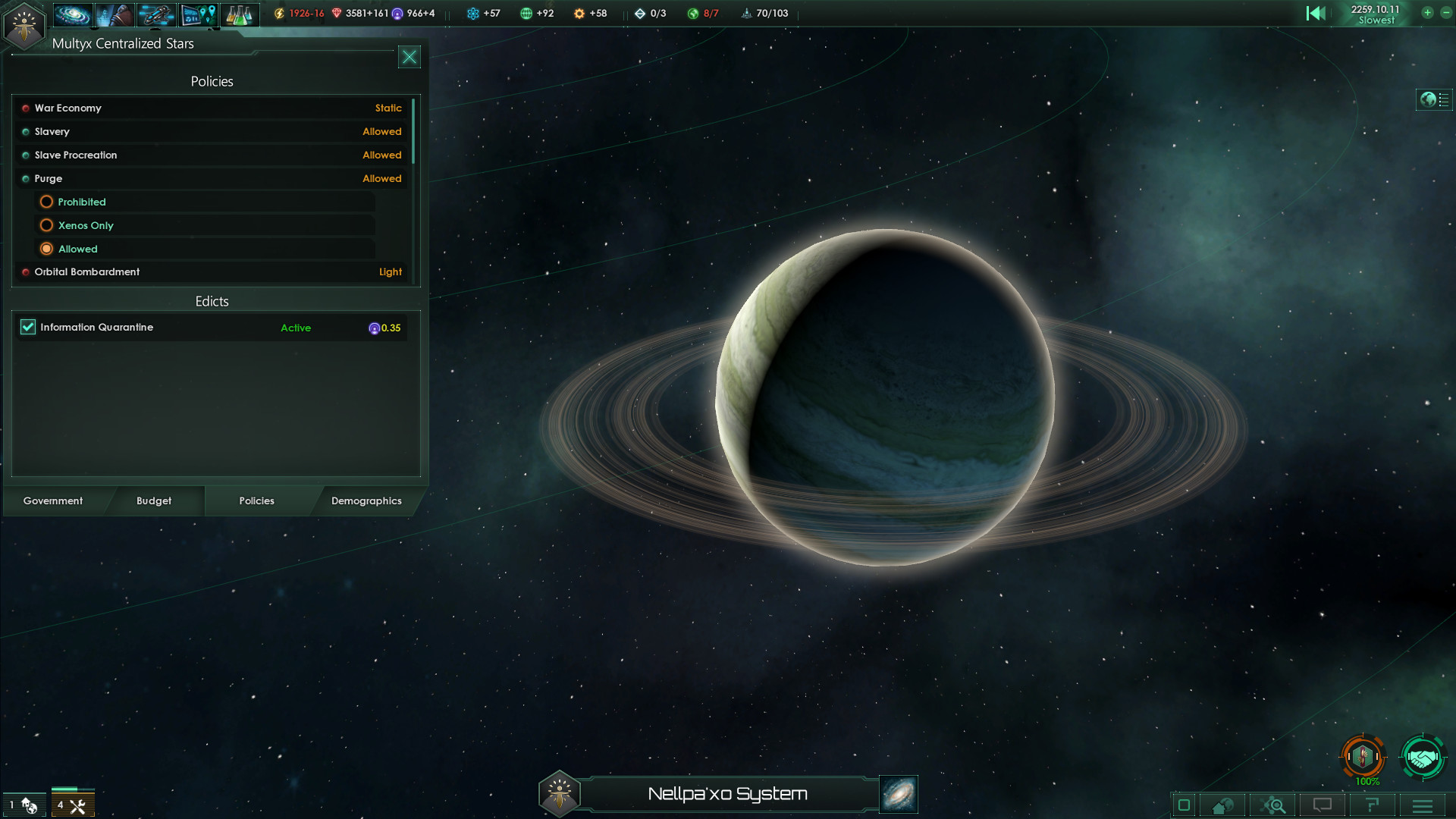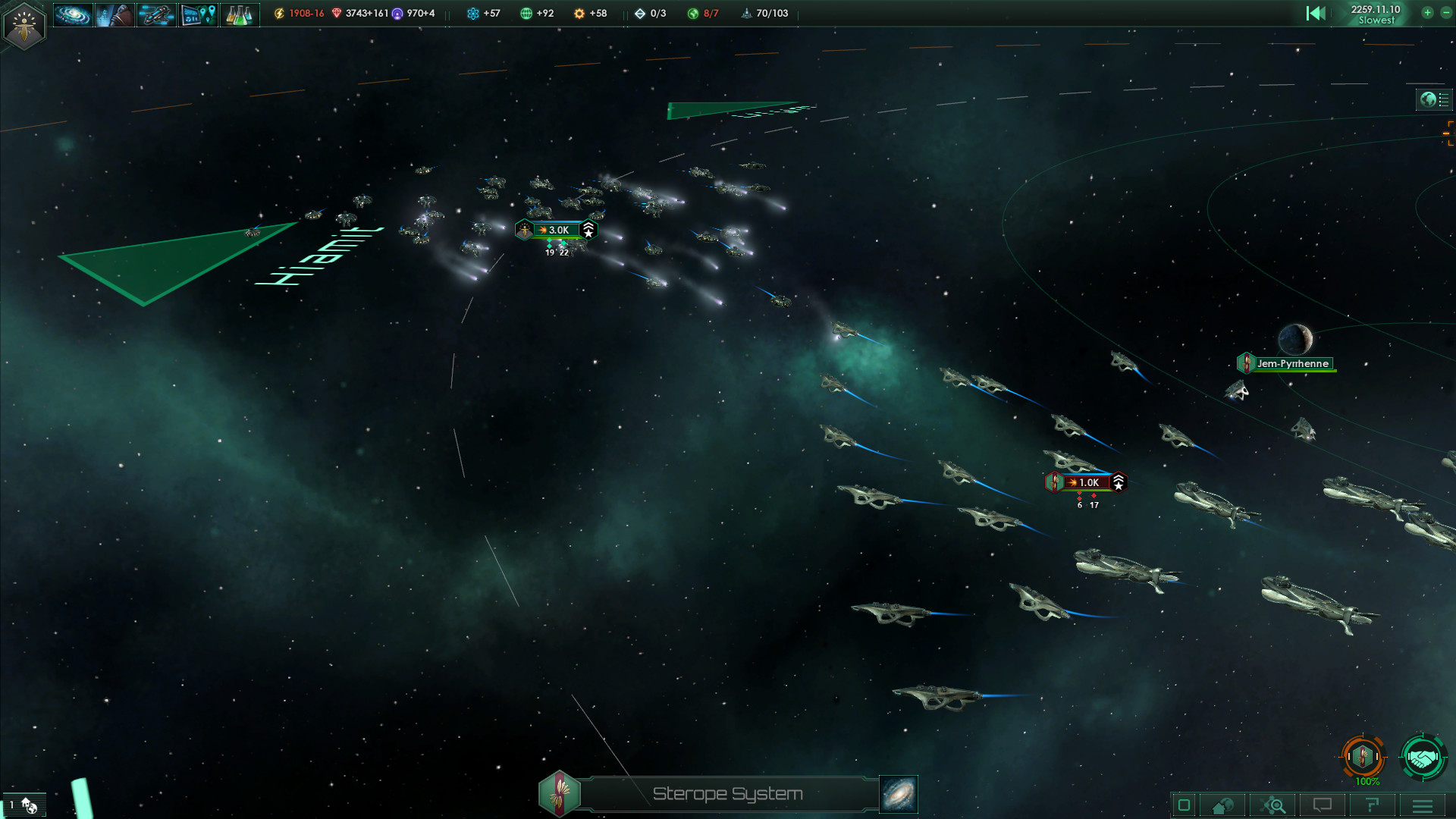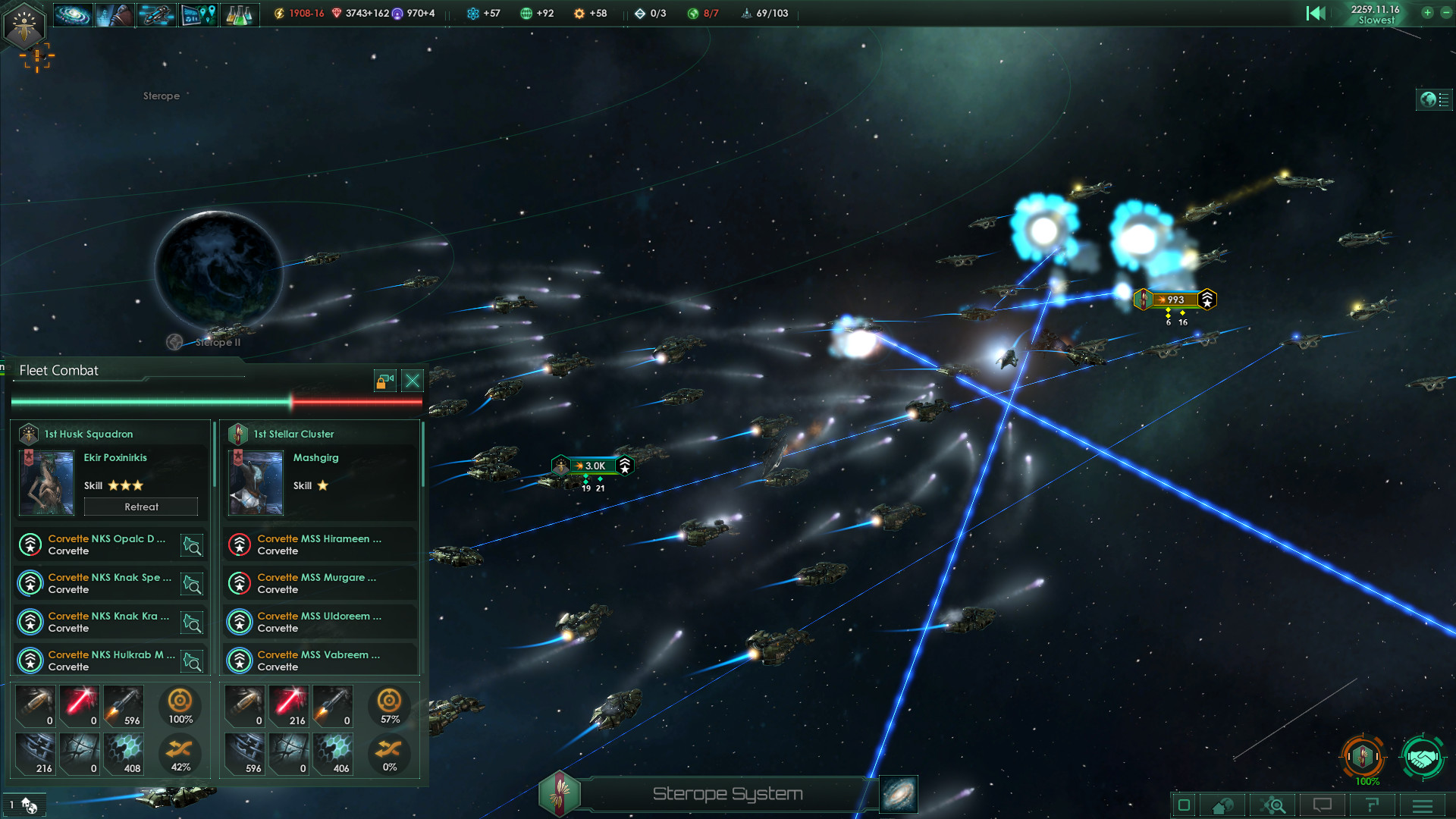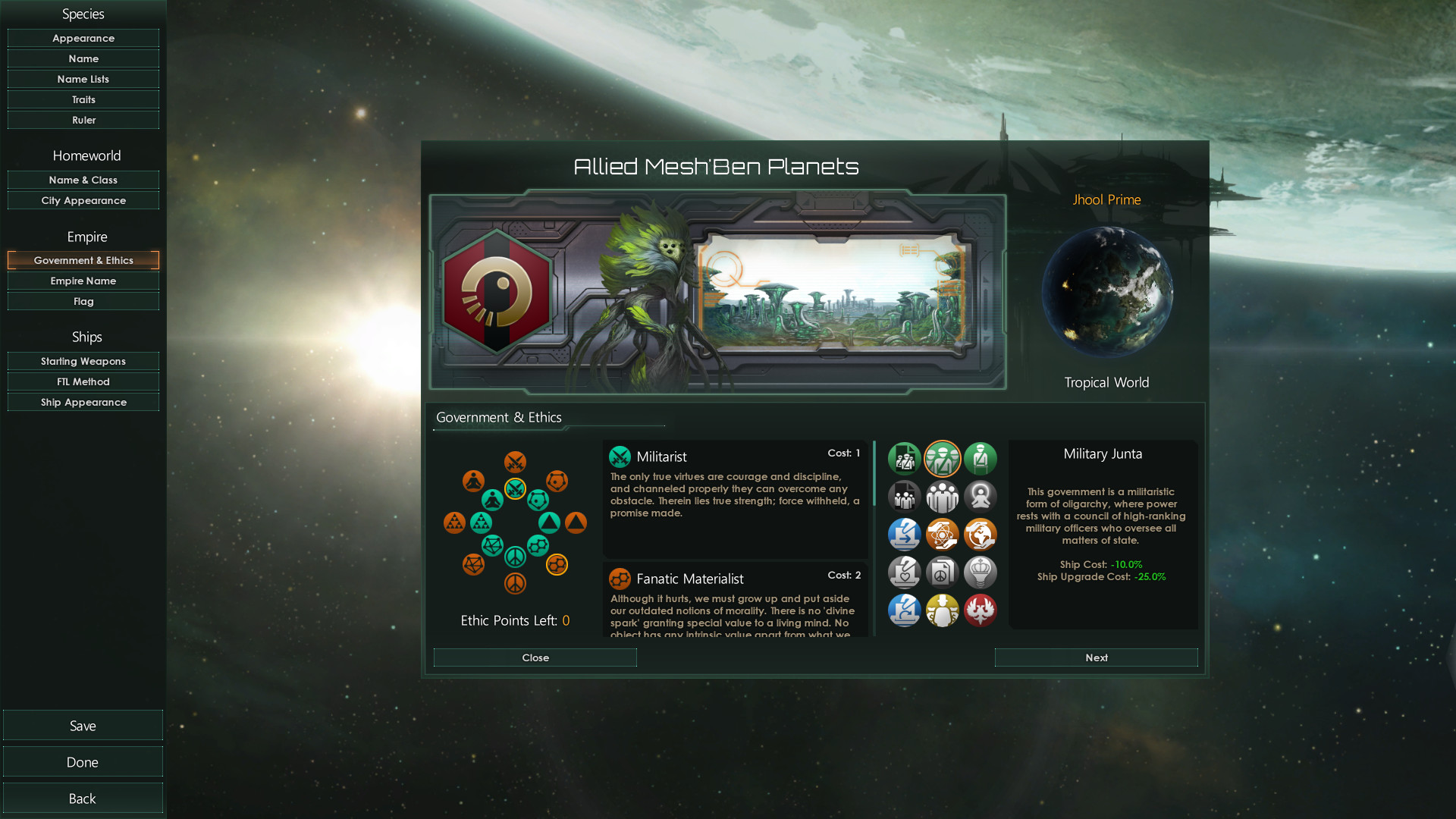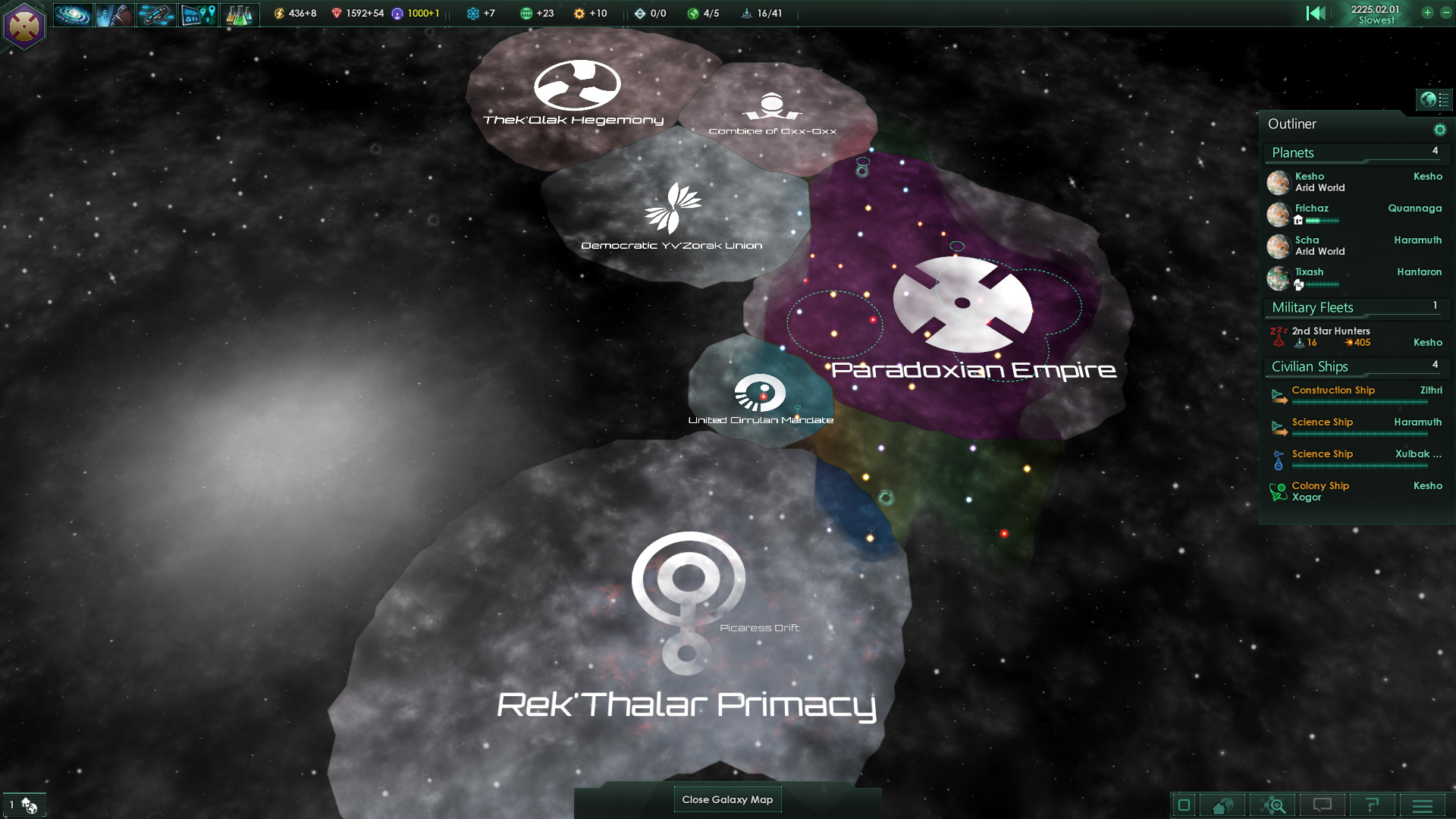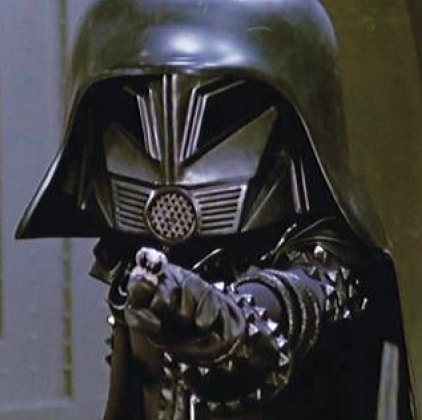Explore a vast galaxy full of wonder! Paradox Development Studio, makers of the Crusader Kings and Europa Universalis series presents Stellaris, an evolution of the grand strategy genre with space exploration at its core.
Featuring deep strategic gameplay, a rich and enormously diverse selection of alien races and emergent storytelling, Stellaris has engaging challenging gameplay that rewards interstellar exploration as you traverse, discover, interact and learn more about the multitude of species you will encounter during your travels.
Etch your name across the cosmos by forging a galactic empire; colonizing remote planets and integrating alien civilizations. Will you expand through war alone or walk the path of diplomacy to achieve your goals?
Main Feature
Featuring deep strategic gameplay, a rich and enormously diverse selection of alien races and emergent storytelling, Stellaris has engaging challenging gameplay that rewards interstellar exploration as you traverse, discover, interact and learn more about the multitude of species you will encounter during your travels.
Etch your name across the cosmos by forging a galactic empire; colonizing remote planets and integrating alien civilizations. Will you expand through war alone or walk the path of diplomacy to achieve your goals?
Main Feature
- Deep & Varied Exploration.
- Enormous procedural galaxies, containing thousands of planets.
- Explore Anomalies with your heroic Scientist leaders.
- Infinitely varied races through customization and procedural generation.
- Advanced Diplomacy system worthy of a Grand Strategy Game.
- Ship Designer based on a vast array of technologies.
- Stunning space visuals.
Stellaris Dev Diary #188: Necroid Characters & the Art process
Once we feel we have enough, we look at what we have, discuss them and put them in clusters, things that relate to each other and might be an idea for a species. We want each species to be as different from each other as possible, as well as trying to fulfill as many different player fantasies as possible.
On of the things we do to add depth to the ideas is we try to come up with a backstory for each of the, to explain a bit more what they are. Does not have to be that detailed, just something to give some context, and adds details, and helps the artist when they paint them, drawing on their history.
A backstory might be something like:
A species which inhabits a completely sealed suit which they can never leave. You can see through the transparent helmet that whatever they once were, they are a hollow scare version of that.
An alien that has kept itself alive through genetic manipulation, the cells no longer die, they just keep dividing. The body has grown uncontrolled and looks weird / mutated.
[h2]
Developing ideas[/h2]
So once we have settled on the 15 or so ideas we need, we start sketching out various ideas. For the initial ones we usually just do line art, sometimes rough shading, it depends on the artist. We always develop at least 3-4 different versions of each character idea before going ahead and developing it further.
Here are some of the early look dev for some species.



After the sketching phase, we use much the same process for developing aliens as we do for ship designs. We start out with rough sketches for the ideas, to see which path we want to go on. Then we choose the one we think has the best potential, develop it a bit further, trying different sub variants / poses. Once we are happy with the idea and its structure, we usually do a color test, look at different ways we can shade them.
Here is an example of what all this looked like for the aforementioned alien which extended life through genetic manipulation.

[h2]
Idea Variants / Refinement[/h2]

[h2]
Color variants[/h2]


Example of what the character looks like in Maya, all set up and rigged.
So once the color test, and layer split is done, we can finally move on to the final render. This is where most of the work comes in, making it feel more 3 dimensional, making sure the materials look realistic.

--------
That is all for this week. Next week we'll be posting the patch notes!
Hello everyone!
My name is Fredrik Toll, and I am the Art Director for Stellaris. For this week's dev diary, we will have a look at how we develop our characters included in the Necroids Species Pack.
Finding ideas
Much like when we design the ships, we start out with reference gathering, finding anything that inspires us visually. We gather everything we can find that fits roughly within the theme. In this case it was everything from Venetian masks, Egyptian mummies, Mexican makeup from Da de Muertos, wraiths, ascended energy beings, vampires, dark elves, and of course skulls. We are looking to find as many different ideas as possible.Once we feel we have enough, we look at what we have, discuss them and put them in clusters, things that relate to each other and might be an idea for a species. We want each species to be as different from each other as possible, as well as trying to fulfill as many different player fantasies as possible.
On of the things we do to add depth to the ideas is we try to come up with a backstory for each of the, to explain a bit more what they are. Does not have to be that detailed, just something to give some context, and adds details, and helps the artist when they paint them, drawing on their history.
A backstory might be something like:
A species which inhabits a completely sealed suit which they can never leave. You can see through the transparent helmet that whatever they once were, they are a hollow scare version of that.
An alien that has kept itself alive through genetic manipulation, the cells no longer die, they just keep dividing. The body has grown uncontrolled and looks weird / mutated.
[h2]
Developing ideas[/h2]
So once we have settled on the 15 or so ideas we need, we start sketching out various ideas. For the initial ones we usually just do line art, sometimes rough shading, it depends on the artist. We always develop at least 3-4 different versions of each character idea before going ahead and developing it further.
Here are some of the early look dev for some species.



After the sketching phase, we use much the same process for developing aliens as we do for ship designs. We start out with rough sketches for the ideas, to see which path we want to go on. Then we choose the one we think has the best potential, develop it a bit further, trying different sub variants / poses. Once we are happy with the idea and its structure, we usually do a color test, look at different ways we can shade them.
Here is an example of what all this looked like for the aforementioned alien which extended life through genetic manipulation.
Rough sketches

[h2]
Idea Variants / Refinement[/h2]

Rendering

[h2]
Color variants[/h2]

3D Characters
Even though the characters are done in 2D, and look like it in game. The way they are made is technically in a 3D software. To do this, the character needs to be split into layers. So before rendering all the details, we split them up into the components they need. Tentacles might be several layers, eye lids, arms etc, anything that moves needs to be on a separate layer. By splitting them up early, the animator can start setting them up with the rough version. While the 2D Artist continues his work on the details. This also enables us to catch any issues with the character earlier.Character texture

Character in 3D in perspective view

Example of what the character looks like in Maya, all set up and rigged.
So once the color test, and layer split is done, we can finally move on to the final render. This is where most of the work comes in, making it feel more 3 dimensional, making sure the materials look realistic.

--------
That is all for this week. Next week we'll be posting the patch notes!
[ 2020-10-15 11:48:08 CET ] [Original Post]
Minimum Setup
- OS: Ubuntu 20.04 x64
- Processor: Intel iCore i3-530 or AMD FX-6350Memory: 4 GB RAM
- Memory: 4 GB RAM
- Graphics: Nvidia GeForce GTX 460 or AMD ATI Radeon HD 5870 (1GB VRAM). or AMD Radeon RX Vega 11 or Intel HD Graphics 4600Network: Broadband Internet connection
- Storage: 12 GB available space
Recommended Setup
- OS: Ubuntu 20.04 x64
- Processor: Intel iCore i5-3570K or AMD Ryzen 5 2400GMemory: 4 GB RAM
- Graphics: Nvidia GeForce GTX 560 Ti (1GB VRAM) or AMD Radeon R7 370 (2 GB VRAM)Network: Broadband Internet connection
- Storage: 12 GB available space
GAMEBILLET
[ 6469 ]
GAMERSGATE
[ 2503 ]
MacGamestore
[ 1972 ]
FANATICAL BUNDLES
HUMBLE BUNDLES
by buying games/dlcs from affiliate links you are supporting tuxDB

